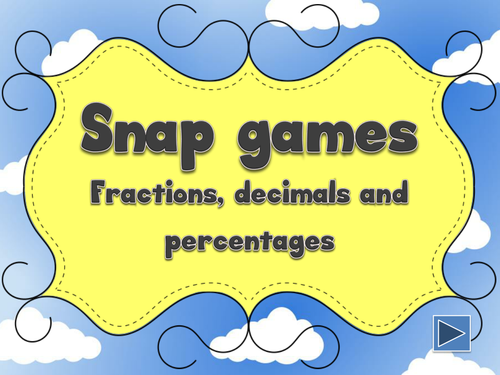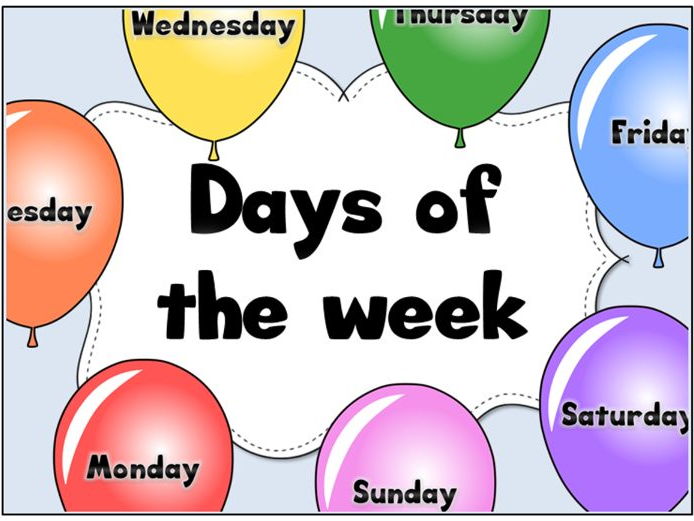
40Uploads
41k+Views
27k+Downloads

Certificate with editable version
A general certificate to celebrate achievement. There are 4 different versions saved as PDFs. I have also included an editable version (other than the title).

Differentiated money worksheets
8 differentiated money worksheets created for year 4. This includes;
• Adding money by counting repeating coins,
• Adding money ordered largest to smallest,
• Adding money in random orders,
• Adding decimals (column method),
• Reasoning skills from a menu (following pictures),
• Adding two 2 digit numbers,
• Finding change from £1, £2, £5 and/or £10,
• Money word problems (not differentiated but gets harder).
There is a differentiated ‘First to spend £10’ game and a laminate to use with lower abilities (to use a whiteboard pen).

Year 3/4 Mathematics reasoning investigations, focusing on re-ordering / rearranging
Mathematical reasoning has been brought into focus with the poor results of the PISA tests. These 5 investigations focus on re-ordering work with emphasis on a given set of options.
They are ultimately suited to year 3 but without prior investigation work, I’ve used these successfully in my year 4 class. I would advise using equipment/resources to spark interest in the task.
Each investigation has an extension which is a level above the problem for those children who are capable learners already. This assists classroom management, where high achievers can be disengaged when problems seem obvious to them.
There is also vocabulary specific to re-ordering work, to assist the teacher in promoting the language and therefore facilitate progress.

Halving diamond, partitioning and halving 2 digit numbers PowerPoints
4 PowerPoints to use alongside the Big Maths clic sessions. I also use them as whiteboard sessions at the beginning of Maths lessons. They get progressively harder from the first to last, ending up introducing decimals.
There are 5 pages to each PowerPoint which are suitable for year 1/2 upwards.

Doubling diamond, partitioning and doubling 2 digit numbers PowerPoints
4 PowerPoints to use alongside the Big Maths clic sessions. I also use them as whiteboard sessions at the beginning of Maths lessons. They get progressively harder from the first to last, breaking the tens barrier twice by the end.
There are 5 pages to each PowerPoint which are suitable for year 1 upwards (or consolidating / introducing to older years).

FUN colouring division with remainders, times tables 2-10
9 colouring sheets for fun differentiated times table practice. Answers are included as are times tables cards for LA.
Pupils need to calculate the remainders for each number, follow the key at the foot of the page and colour the boxes accordingly. Pupils guess the picture at the end.

Fractions, decimals and percentages - fun interactive white board games
6 enjoyable snap games focusing on two elements at a time e.g. fractions to decimals, starting with easier matches e.g. ½ and 0.5 and increasing in complexity.
The first three games are targeted for level 4 (big maths too) and the last three are level 5 questions.
The pupils click on two choices, which are then revealed. If they are incorrect, they need to reset the board. If they are correct, they may continue until they match two incorrect tiles. The game needs instruction initially, as with the limits of PowerPoint, it will not say if the matches are correct or not.
They can be used as a fun introduction, plenary or independent games. The games will work on an iPad that has PowerPoint. The game can be sent to the iPad as an email attachment or through Dropbox / Google Drive and opened with PowerPoint.
There is one larger version with sound and a smaller version without. Both have the same questions.

Wall clock in Welsh, Cloc CA2 barod i lamyneiddio
Arddangosfa cloc am eich dosbarth. Addurnwch eich cloc ddiflas fel ei fod yn adnodd ar gyfer gwersi Mathemateg.
Barod i lamyneiddio a gosod fel y llun.

Equivalent fractions fun introduction game (1/2 and 1/3)
My new thing in class is not to introduce work but rather start at the end, with a quiz. Can they remember what they’ve learnt previously? Can they discover the concepts on their own? Let’s guess / infer together? We can get it wrong, but let’s try. (Metacognition)
This fractions game isn’t straight forward. The halves are pictured as 3/6, 2/4 etc. so this would be the next step on from simply naming fractions. It’s an introduction to equivalent fractions (1/2 and 1/3).
The game is interactive, with the aim of popping all of the bubbles. Press a bubble to choose a question. Press the correct answer on the question slide and you return to the question screen with your bubble popped. Press a wrong answer and it simply shakes. Keep going until you choose the correct one.
You can keep a record of the scores when the presentation is active by typing them in yourself on the question screen. It is also possible to name the teams in the same way.

5 Weeks Mastery interactive Mathematics PowerPoints and resources – Reception, Weeks 2-6
Please download week 1 for FREE first to see the product examples https://www.tes.com/teaching-resource/mastery-weekly-interactive-mathematics-powerpoints-reception-counting-number-recognition-double-11961922
I created these because I had no resources and they turned out to be amazing! They proved so successful with the children and the two other Reception teachers; I continued to produce them for the rest of the year. Worksheets, matching games etc. are included.
You will receive 5 interactive PowerPoints. A list of their contents. Worksheets, games and activities I created to support their learning.
I use each presentation at least 3 if not 4 times a week prior to Maths session. By the end of the week those who were struggling on Monday had a better understanding by the end of the week. The children are chosen to come to the whiteboard for most of the PowerPoint pages e.g. to pop the bubbles whilst counting down from 10, which they love (with improved listening skills!).
Many concepts e.g. the idea of zero or addition are much easier to understand visually e.g. eating all of the cakes (gone) or combining items (altogether), telling number stories.
The PowerPoints start from scratch. Unfortunately, the difference between the highest achiever and lowest at Reception can be enormous and my philosophy is ‘no one left behind’. They change pace quickly and certain aspects such as the ‘doubling bunny’ rely on repetition and learning ‘the action’ (children physically perform it) so that they can say the answers before tackling the maths later on in the year.
Each lesson begins with:
Shape discussion (click the shape to make it dance),
Counting upwards (from the number of the week),
Counting from 10 to zero (clicking on the images so that they disappear one by one).
Different concepts are then added each time.
I have created these PowerPoints to satisfy:
• Maths mastery,
• Little Big Maths,
• The Welsh foundation phase curriculum / English eyfs curriculum,
• Individual profiles (Reception),
• It introduces the part part whole aspect of Singapore Maths and also the bar method (later on),
• It also utilises ideas from the White Rose Maths.
Week one is free so that you can see how this works in your class. The rest are in half termly packs.

IPad rules printable posters (editable)
I’ve been fortunate enough to have iPads in my class for over two years and I finally realised that I need a set of rules that I can establish at the start of the year.
I’ve produced these as I wanted to add my own ideas. I appreciate that you too might want to amend / add to these, therefore I have produced:
• 13 rules that I will be using in my class (ready to print),
• The same 13 rules but in an ‘I will’ format,
• 17 editable posters (including blanks of the 13 I am using) and
• 2 blanks as extras.

End of year booklet, transition to next year
15 page transition booklet with end of year worksheets that were written for year 4 but are suitable for other years. Activities include reflecting, demonstrating Mathematical problem solving skills, the school day, friends, achievements, letter to new teacher etc. They can easily be used as single worksheet as an instructed task or be given to the class to work independently.
*Mae versiwn Cymraeg ar gael ar wahan hefyd.*

Solo taxonomy and Metacognition class posters
Metacognition or learning how we learn is the buzz word at the moment. Aside from introducing this idea to your pupils and pondering what sort of learner you are yourself! you will need some sort of tool for reference in class.
I have devised these posters to use prior to the class starting work. They have exceeded my expectations with how well they work and what impact they've had in the class.

Calendar questions – Fun group work cards, reasoning with time
Develop Mathematical Reasoning with these calendar questions.
Learning from each other in group work goes a long way when tackling the range of abilities and knowledge when dealing with facts associated with time.
Answers can be recorded as photographs with counters to prove their learning if necessary.
Instructions - Arrange the class into 10 or less groups. Each group has a set of calendars. Questions are place in different places in the classroom. Groups are given different starting numbers. Teacher stays close to question 6 as they might require assistance. The task can be timed. First group to complete all correct answers wins(?)

Connect 4 addition.
5 connect 4 games to print and laminate. Sums developed to promote and develop addition, braking the tens barrier. The sums begin with 1 digit + 1 digit and progress up to 3 digit + 2 digit numbers.

100 number bonds scales ppt and missing numbers worksheets
10 paged Powerpoint to find the missing weight that makes 100g each time. Created to introduce missing digits and mathematical reasoning skills.
The connection should be made between the weights and a missing digit sentence e.g. 35 + __ = 100. It also enables you to compare 100 = __ + 35 and the validity of both.
I recommend that you use my Mr 100 to find the 100 number bonds, but then I would!

Coin dominoes, Money, 0-10p and 0-20p
Ready to print and laminate.
There are two sets of dominoes, one with dominoes 0 - 10p and another with dominoes 0 - 20p.

Number fans and also numicon, dice, 2D shapes 3D shapes, coins and fractions
8 different versions of fans ready to cut out and laminate. Both have sets in colour and also with a white background.
Coins include the new £1 coin.
If you have any other ideas / requests please place in the comments.

Balwnau dyddiau'r wythnos
7 balwn dyddiau'r wythnos yn barod i argraffu. Gellir fewnosod y lluniau i ddogfen word i addasu'r meintiau cyn argraffu.

Days of the week balloons display
Days of the week balloons as A4 clip arts. Ready to print and display. Enjoy!






















